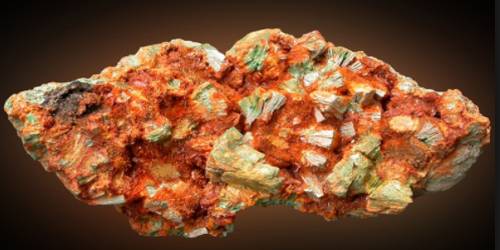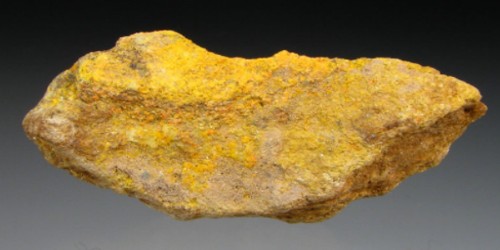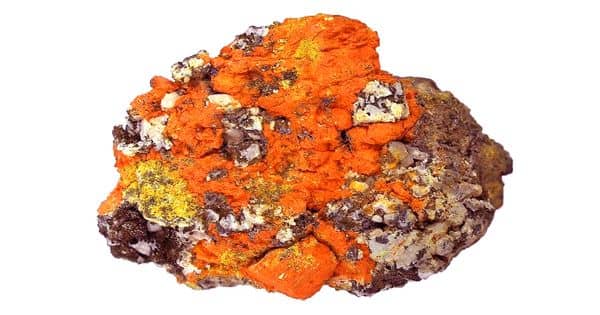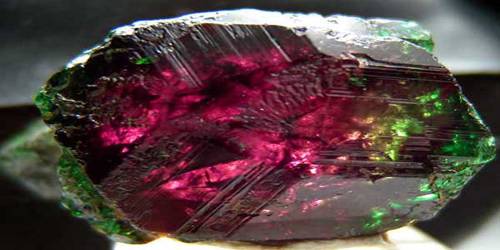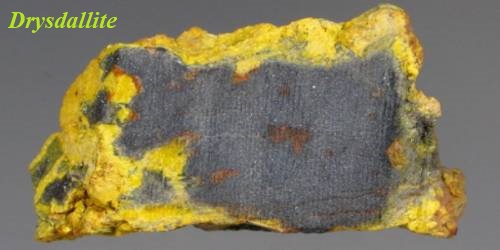Curite is a lead uranium oxide mineral with formula: Pb3(UO2)8O8(OH)6·3(H2O). It is named after the physicists Marie and Pierre Curie, who are both known for their work on radioactivity. The type locality is the Shinkolobwe Mine. It is an orthorhombic-dipyramidal mineral containing hydrogen, lead, oxygen, and uranium.
It can be identified in the field by its yellow, brownish yellow or reddish orange variations with an orange streak, adamantine luster and good cleavage. It has a transparent to translucent appearance.
General Information
- Category: Oxide mineral
- Formula: Pb3(UO2)8O8(OH)63(H2O)
- Crystal system: Orthorhombic
- Crystal class: Dipyramidal (mmm)
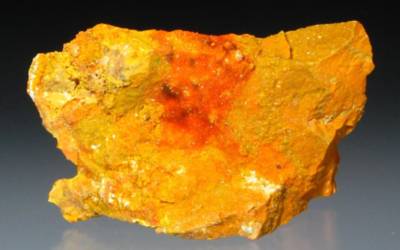
Properties
Curite is a lead uranium oxide mineral named after the physicists Pierre and Marie Curie known for their work on radioactivity. It fractures are brittle just like most of the non-metallic minerals and glasses. The mineral can be formed as massive needle-like crystals or crust-like aggregates. The density of curite is 7.19 g/cm3, and its relative hardness ranges from 4 to 5.
- Color: Yellow, reddish orange, brownish yellow.
- Crystal habit: Massive, acicular, compact earthy.
- Tenacity: Brittle
- Mohs scale hardness: 4-5
- Luster: Adamantine
- Streak: Orange
- Diaphaneity: Transparent
- Specific gravity: 6.98 – 7.4
- Optical properties: Biaxial (-)
Occurrence
Curite occurs as a secondary mineral commonly found through alteration of uraninite. It is closely associated with sklodowskite, rutherfordine, torbernite, dewindtite, kasolite, soddyite, schoepite, vandendriesscheite, and fourmarierite.
It can be found in many localities including the Democratic Republic of Congo, France, Germany, Canada, Australia, and Madagascar. Curite is strongly radioactive.
Information Source:
